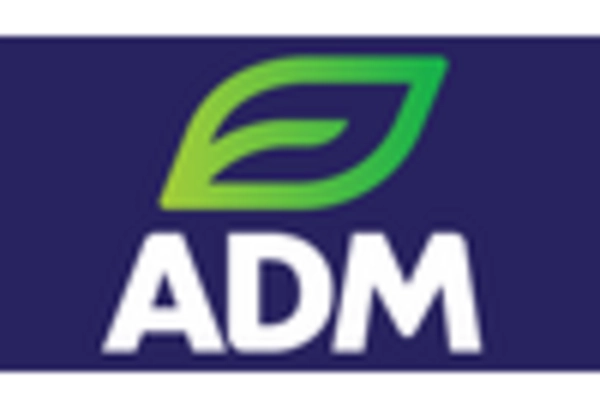Shift Towards Plant-Based Diets
The shift towards plant-based diets is emerging as a significant driver for the Insoluble Dietary Fiber Market. As more consumers adopt vegetarian and vegan lifestyles, the demand for plant-based sources of dietary fiber is surging. Insoluble fiber, found abundantly in whole grains, fruits, and vegetables, aligns well with this dietary trend. Market Research Future indicates that the plant-based food market is projected to grow at a CAGR of 10% over the next five years. This growth is likely to enhance the demand for insoluble dietary fiber, as consumers seek natural and wholesome ingredients in their diets. Consequently, manufacturers are increasingly focusing on incorporating insoluble dietary fiber into their plant-based products.
Growing Demand for Functional Foods
The trend towards functional foods is significantly influencing the Insoluble Dietary Fiber Market. Consumers are increasingly seeking foods that offer health benefits beyond basic nutrition. Insoluble dietary fiber is often incorporated into various products, including cereals, snacks, and baked goods, to enhance their health profile. The market for functional foods is expected to grow at a compound annual growth rate of around 8% over the next few years. This growth is driven by the rising consumer preference for products that support digestive health and overall well-being. As manufacturers innovate to meet this demand, the presence of insoluble dietary fiber in food products is likely to expand.
Regulatory Support for Health Claims
Regulatory bodies are increasingly supporting health claims associated with dietary fiber, which is a crucial driver for the Insoluble Dietary Fiber Market. Governments and health organizations are recognizing the importance of dietary fiber in preventing chronic diseases, leading to favorable regulations that encourage the inclusion of fiber in food products. For instance, the FDA has established guidelines that allow manufacturers to make health claims regarding fiber content. This regulatory support not only boosts consumer confidence but also incentivizes manufacturers to incorporate more insoluble dietary fiber into their offerings. As a result, the market is expected to witness a steady increase in the availability of fiber-enriched products.
Rising Awareness of Digestive Health
The increasing awareness regarding digestive health is a pivotal driver for the Insoluble Dietary Fiber Market. Consumers are becoming more informed about the benefits of dietary fiber, particularly its role in promoting regular bowel movements and preventing constipation. This awareness is reflected in the growing demand for fiber-rich foods and supplements. According to recent data, the dietary fiber market is projected to reach a value of approximately 5 billion USD by 2026, with insoluble fiber accounting for a substantial share. As more individuals seek to improve their gut health, the demand for insoluble dietary fiber is likely to rise, thereby propelling the market forward.
Increased Focus on Preventive Healthcare
The rising emphasis on preventive healthcare is a notable driver for the Insoluble Dietary Fiber Market. As healthcare costs continue to escalate, consumers are becoming more proactive about their health, seeking dietary solutions that can prevent diseases. Insoluble dietary fiber is recognized for its potential to reduce the risk of various health issues, including obesity and diabetes. This trend is reflected in the increasing sales of dietary supplements and functional foods that contain high levels of insoluble fiber. Market analysts predict that the preventive healthcare market will expand significantly, further boosting the demand for insoluble dietary fiber as consumers prioritize health maintenance through dietary choices.

















Leave a Comment